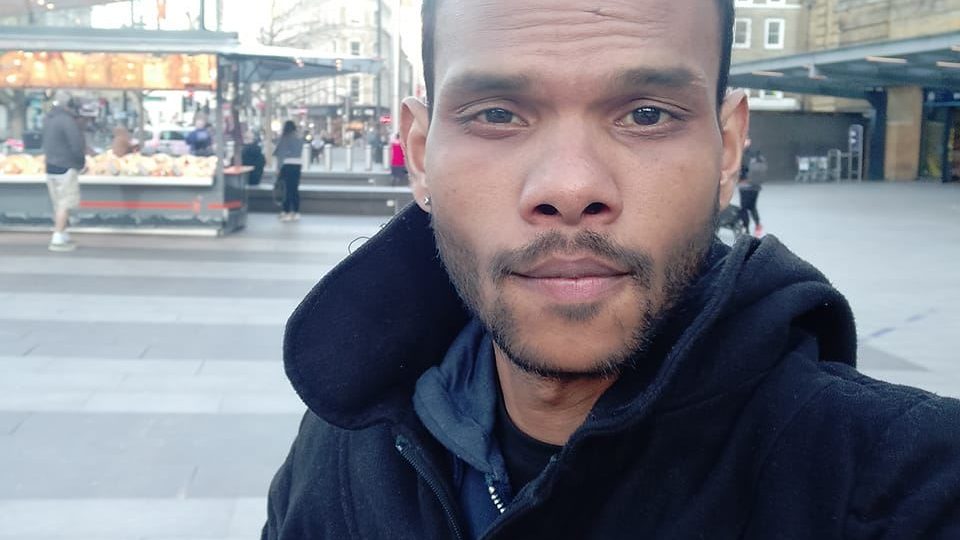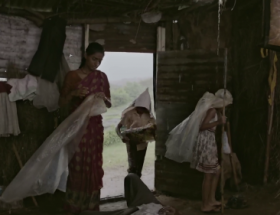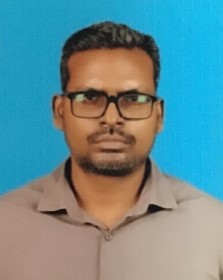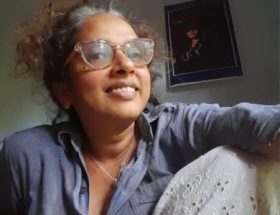Sumeet Samos
Growing up in a small village in South Odisha in a Christian family, there were regular prayer meetings in our house and Sunday services in a nearby church, and my parents would always emphasize the teachings of the Bible and ask us to remember the verses from the Bible for our everyday lives. As Christian children, we grew up with a certain sense of confidence in who we were, without any negative self-image of ourselves, since we were constantly told we were children of the almighty God, that we were loved, and that we could pray to God through every life circumstance. Unlike many other places in India, there were rare higher-caste converts in my region and in my village. As a result, the notion of high and low and feelings of stark differences never arose within the church gatherings and house prayers because all of them would be Dom and Kondh converts, and even pastors would usually be of the same social groups. There were certain cultural differences between the Dom and Kondh converts, mostly in terms of language and attire, but that never led to any disharmony such as high and low.
However, except for the church gatherings and house prayers, our social interactions and everyday life sharing would be with Doms in the village who were not Christians. We spoke the same language, ate the same food, looked similar, and lived nearby. The dominant Sundi caste in villages nearby looked down on us without any close social interactions. While growing up, I and many other young Christians never bothered to ask the question of whether it was because of our caste or that we were Christians. These unspoken conversations and unrealized thoughts gradually started to unsettle the secure and confident identity we grew up with in a close circle of Christians from similar social backgrounds. Particularly after 2007, when right-wing Hindu groups started becoming active during events of anti-Christian violence and fear mongering, as young students we would hear about many Doms being at the forefront of it. I would then question myself: if we were the same people, why are they attacking their own people? These discomforts exist even today, where young Dom converts often argue that during times of right-wing upsurge, the other Doms would change sides.
As I moved out of my village to the towns for study and work, I realized Christianity, in the perception of other higher and intermediary caste people, was synonymous with the religion of the Doms, or the SC people, as they would refer to it. The same identity with which I grew up with a lot of security and confidence with no sense of high or low now had to confront suspicious and demeaning questions about our intentions, how we are advancing in life, what happens in our close gatherings and foreign funding, etc. These questions also came from the Doms, who lived close to us but were not Christians. All the big towns in South Odisha have a locality that has a significant Dalit Christian population, mostly from the Dom community, and during my high school years, I too lived in one such Dalit Christian slum in a town named Damanjodi. Whether you are a Christian or not, everyone who lived around that place was referred to as SC, and even now, many Dom converts refer to themselves as SC Christians even if they don’t have the SC certificate. The term SC is more neutral-sounding for them than the word Dom, which is on the face a strong reminder of their caste identity. However, contrary to what they expect, even the term SC is laced with heavy negative stereotypes of criminality, of being uncivilized, troublemakers, inferior mannerisms, and habits, and these are in addition to the tropes of suspicion, foreign funding, and conversion agendas that get projected on them for being Christians.
Decades of missionary engagements, exchanges with churches in other states of India, and a section of young students going to South Indian cities and towns for nursing and other medical courses in Christian institutions and to learn foreign languages have led to the creation of a strong and confident Christian community in South Odisha that immediately comes together during times of crisis. The smallness of a collective Dom or SC identity is mitigated to an extent by some of the historical experiences I cited above. Internally, in family prayers and small church gatherings, there is an emphasis on being more like Jesus Christ, to love one another, to serve the people around, and the constant reminder that no matter what happens, God is there as a companion, to rely on Him, and that God loves us. These messages are often shared through songs, feasts, sermons, group meetings, etc. However, externally, they are discriminated against both as Doms as well as Christians, and those events invariably lead to two kinds of responses: one where both axes of discrimination are acknowledged while the other is where the axis of caste is negated to firmly stand on one’s Christian identity. When the Maoist movement was at its peak, SCs as a whole faced the brunt of the conflict, and more than hundred families had to be displaced to towns, and these families included both Christians and non-Christians. During the right-wing upsurge, however, it is only the Christians among them who face the violence.
Because everyone is of the same social group, the notion of being a socially inferior Christian in relation to socially superior Christians doesn’t come into the conversation. Within those church gatherings, I comfortably identified myself only as a Christian because no one made me feel I was less than them. But when I came out to the city, for the first time, I realized I was different from other Christians, not just culturally but socially. I grew up listening to and reading in the New Testament how culturally diverse communities were part of one Christian community during the early church period, and so I was excited to meet and interact with Christians from different cultural backgrounds. But gradually I realized that even though explicit discrimination does not happen in many city churches, the differences in social worlds are so big that you cannot be yourself and carry traces of your background and where you come from. These reflect in mannerisms, behaviors, tastes, preferences, family legacy, and the smooth sharing of life, where you start feeling you need to acquire all of those to comfortably fit in. The more I started hearing terms like Syrian Christians, Nadar Christians, Mangalorean Christians, etc., I started seeing their life profiles, their family stories, wedding photo shoots, their unconventional career trajectories, and their economic positions, and this led me to grow distant from that social world, which is far away from mine.
Theirs is a world so visibly prim and proper; mine is a world that is visibly a mess where people struggle with so many life circumstances and with themselves, and here people are loudly singing and sharing their life stories in church. Their children sail through life with a lot of comfort and pursue their passions through their networks and connections; our young ones have to struggle for their bare minimum livelihood. I have found myself in dissonance many times, trying to figure out my place in either of these worlds. Even now, when talk of marriages happens in our families back home for successful Dom convert youths, they ask if the person is from our caste apart from being Christian and if they would accept us. The word ‘accept’ makes me feel extremely uncomfortable but reminds me of the real social world. Social service and working among marginalized communities is a Christian ethic that many urban churches adhere to and even practice, but sharing two social worlds and accepting the others as one of their own is still far off. But I hold on to the Christian faith due to my own personal journey and understanding of Jesus, who, as the scripture says, is close to the brokenhearted and crushed in spirit, and who cared about those on the margins and loved them.
Despite the early spread of Christianity in South India, there is no coherent Christian community that could be built over the centuries due to various historical reasons, with caste being prominent among them. Many mission societies worked among Dalits to provide education, health care, modernity, and a new outlook on life through the gospel. And along with contemporary anti-caste movements across the country, this has eventually created a politically aware section of Dalit Christians who have been active in the Dalit struggle against caste. There is definitely hesitation from various Christian communities from other castes and even indifference when it comes to the rights of Dalit Christians both within and outside the churches in South India. But unlike the seamless acceptance of Dalit Christian as an identity in the Dalit struggles of South India, within the larger Dalit struggle, there is usually a sense of discomfort and silence regarding the history and their collective rights in North and Western India. This was quite visible during the recent petitions to the Supreme Court involving Dalit Christians, which received a series of hostile arguments. Events such as this further unsettle the notion of where to stand and claim, because on the one hand, speaking of caste and Dalit rights within church circles is looked at with indifference or as troublemakers and unnecessarily invoking politics, while on the other, collective rights as Dalit Christians are perceived as something outside of the larger Dalit struggle.
Furthermore, within certain Dalit convert circles, there is an aversion to standing as Dalit Christians and demanding rights because that comes across as bringing caste unnecessarily when we have left it behind or that it may polarize society. But has caste been left behind, and to what extent? Even if we say we are only Christians, do others accept us only as that, be it other caste Christians or people of other religions? How does one reconcile the identities of belonging to a Christian fraternity and that of being citizens of a state where social structures like caste are markers of rights and protective measures? And is fighting for the collective rights of Dalit Christians really a division of the church, or is it pursuing a Christian ethic where standing up for the marginalized is what one is called to? Why do many of us still don’t feel like we are one of them while being with other caste Christians, even as cosmopolitan youths?
I am only a Christian in many spaces and in my personal relationship with God in a closed room, but I am also a Dalit in my social world, wherever I am treated as one and stacked with certain barriers because of caste. This is a reality, as are the dilemmas of many Dalit Christian youths who find it difficult to articulate them.
~~~
Sumeet Samos is a writer and an anti-caste activist. He comes from Koraput, Odisha.










